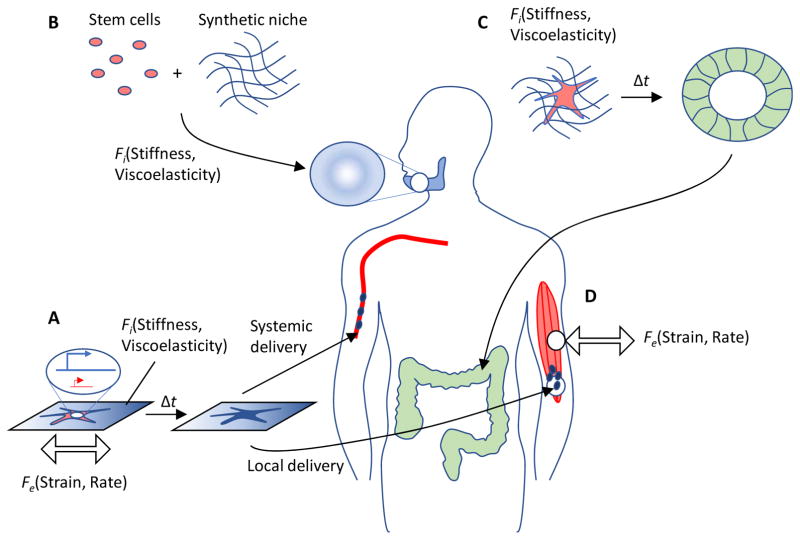Figure 5.
Tissue regeneration can be enhanced by exploiting stem cell mechanobiology. A) Stem cells can be pre-conditioned with mechanical cues, either by culturing on or in matrices with specific stiffness or viscoelasticity, or by applying external forces of a desired strain and rate to the substrate, prior to collection of cells for localized (e.g., skeletal muscle site) or systemic delivery. B) Stem cells can instead be transplanted on or in synthetic matrices with defined mechanical properties, such as stiffness and viscoelasticity, that promote proliferation and/or a particular stem cell fate; in this example, stem cells are programmed by the matrix to enhance bone repair in the mandible. C) Mechanical cues of stiffness and viscoelasticity can also be used in vitro to mimic embryonic development by driving stem cells to undergo self-organization, differentiation, and morphogenesis into organoid tissues, which could then be subsequently transplanted for organ repair or replacement; in this example, repair of the colon. D) Direct application of externally applied forces can be utilized to enhance regeneration by endogenous stem cells; in this example, stem cells in injured skeletal muscle tissue. Both the absolute magnitude of strain and rate of application may regulate the regenerative process.

